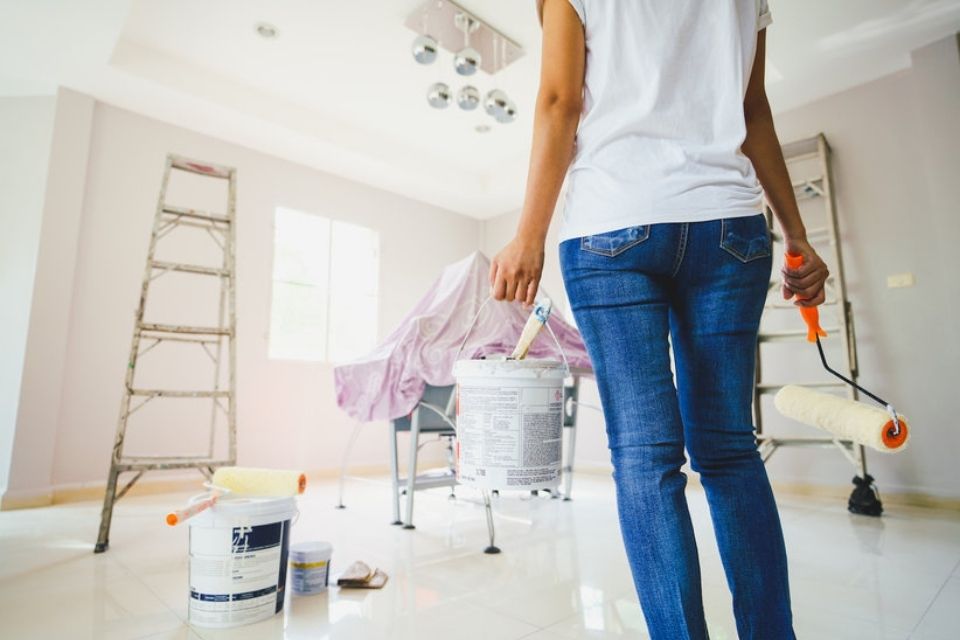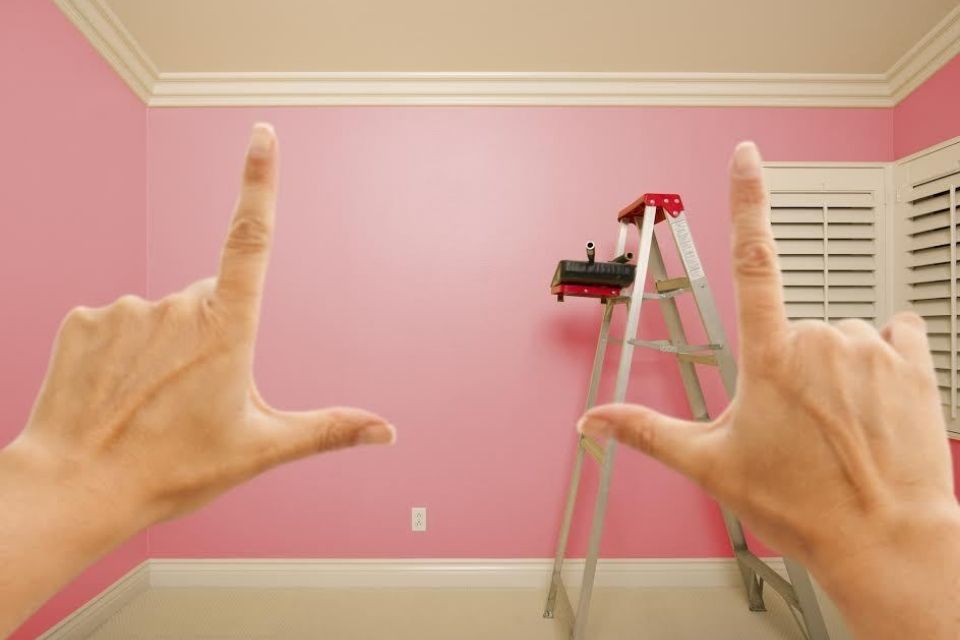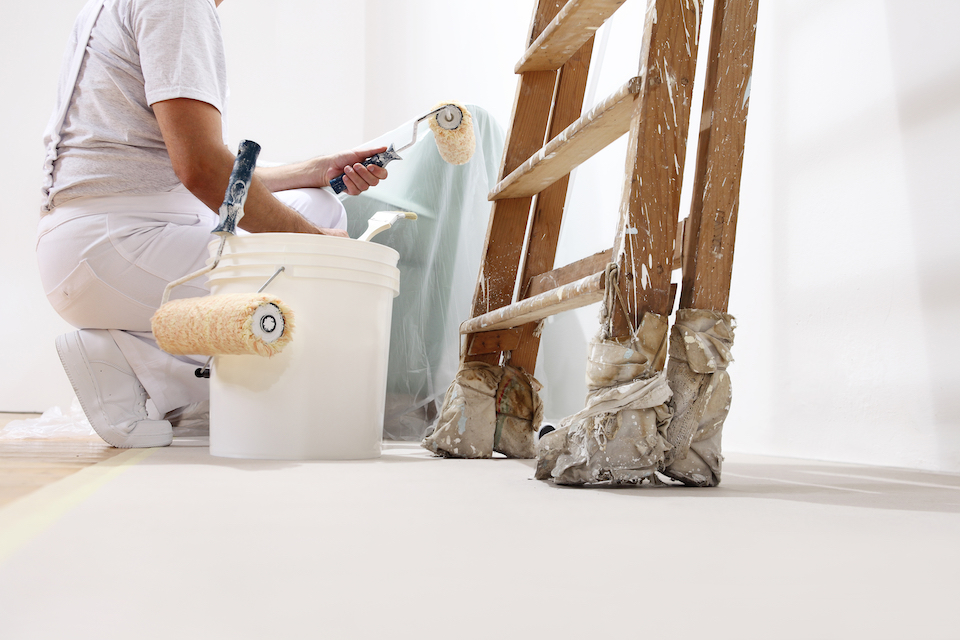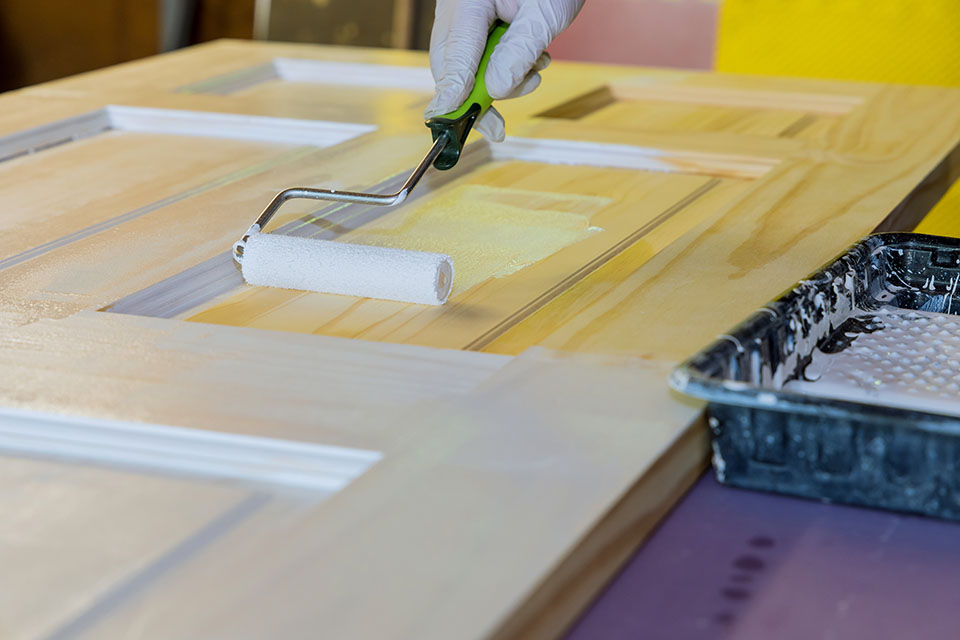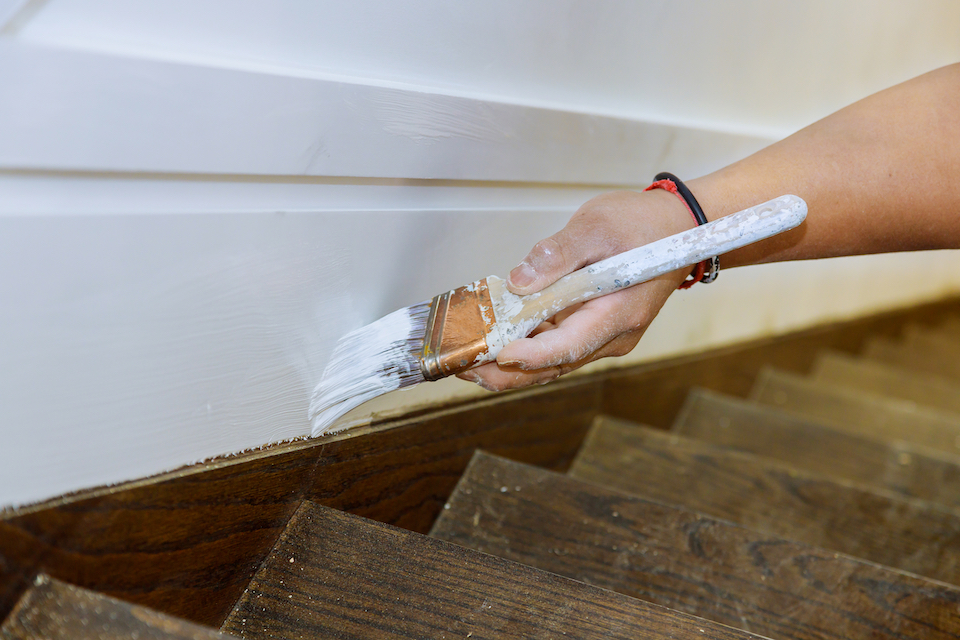How Much to Paint a Room in 2025?
What will this cost guide cover?
Whether you’re painting a single wall or a whole room, this guide will break down all the costs, including labour, supplies, and extras. We’ll also cover the pros and cons of different paint types and how labour costs can affect the price.
Whether you’re DIYing or hiring professionals, expect to spend between £350–£450 on average to paint a 15 m² room.
Let's calculate the costs by room size...
- Small rooms (10 m²): £160–£350
- Medium rooms (15 m²): £350–£450
- Large rooms (30 m²): £520–£530
- Extra large rooms (60 m²): £1,000–£1,020
- Single wall: £65–£265
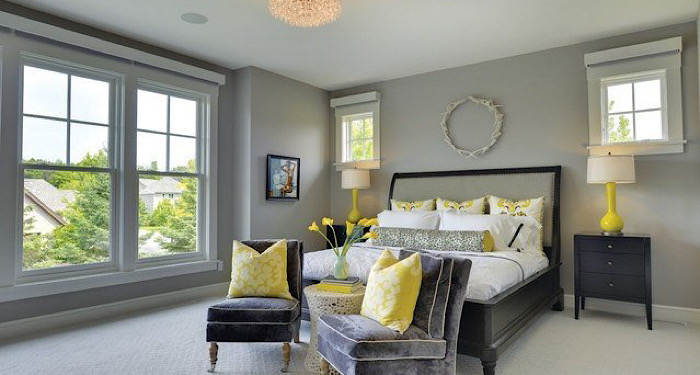
How much should you budget for?
You'll need to budget for around £105 to £505 to paint two walls. The cost for painting three walls will set you back roughly £170 to £770, and for four walls, painting costs anywhere from £185 to £1010.
Another great reason to paint a room is that it's easily affordable, won't take too long to do and will also increase the value of your property.
What Can Change the Cost of Painting?
Factors that can affect costs include:
- Type of paint – Premium paints will cost more
- Wall type – Some surfaces need more prep
- Labour time – Longer jobs, as expected, will cost more
- Number of painters – Additional labour speeds up the work but raises hourly fees
You will more than likely choose to hire one painter, but for a large job like painting a whole house, you could cut down on time by hiring a second labourer.
What about the location of your property?
Where you live is also influential when it comes to the cost of having a room painted. Painters & decorators charge different rates across the nation. Places like the southeast and London, especially, typically charge 10–20% more than the national average.
On the contrary, regions such as the north of England, Scotland, and Northern Ireland feature lower rates than the rest of the country on average.
Room Painting Prices in 2025
This table shows an estimate of what you can expect to pay:
| Wall Area | Labour Cost | Supply Costs | Total Cost |
|---|---|---|---|
| 10m² | £160 | £20 to £30 | £180 to £190 |
| 15m² | £240 | £20 to £30 | £260 to £270 |
| 30m² | £480 | £40 to £60 | £520 to £540 |
| 60m² | £960 | £40 to £60 | £1,000 to £1,020 |
- How Much to Paint a Room in 2025?
- What Are the Supply Costs of a Room Painting?
- Painting Prices by Number of Walls
- Additional Costs of Painting a Room
- How Much Does a Painter Cost?
- How Long Does It Take to Paint a Room?
- Types of Paint
- Benefits of Painting
- How Much Does It Cost to Remove Paint from Walls?
- Painting Alternatives
- FAQs
- Sources
What Are the Supply Costs of a Room Painting?
The cost of supplies excludes the labour cost for painting a room. This section is particularly relevant if you intend to paint a room DIY. A five-litre paint can should be sufficient to coat a surface area of 30 to 35m² twice.
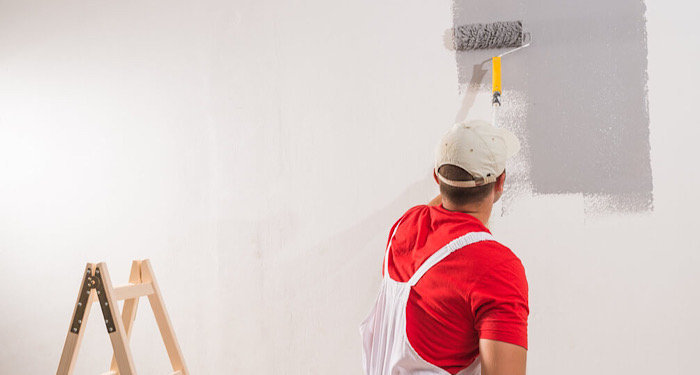
In most cases, a 5L paint product will cost about £20 to £30, so should two paint cans are needed (which would normally be the case), you can look at the supply costs landing around £40 to £60.
The price can rise significantly depending on the size of the room or/and number of walls that need to be painted and the quality/brand of the paint. If you choose to paint a room yourself, it’s important that you choose the best paint.
Supply Costs of Painting a Room
| Wall Area | Supply Costs |
|---|---|
| 10m² | £20 to £30 |
| 15m² | £20 to £30 |
| 30m² | £40 to £60 |
| 60m² | £40 to £60 |
Painting Prices by Number of Walls
The size and complexity of the room being painted can have a major impact on your overall cost. The tables below explains what your average total cost will be for painting a room ordered by size.
Painting a 10m² Wall Area
| No. of Walls | Labour Cost | Supply Costs | Total Cost |
|---|---|---|---|
| 1 | £50 | £20 to £30 | £70 to £80 |
| 2 | £80 | £20 to £30 | £100 to £160 |
| 3 | £130 | £20 to £30 | £150 to £160 |
| 4 | £160 | £20 to £30 | £180 to £190 |
Painting a 15m² Wall Area
| No. of Walls | Labour Cost | Supply Costs | Total Cost |
|---|---|---|---|
| 1 | £190 | £20 to £30 | £210 to £220 |
| 2 | £210 | £20 to £30 | £230 to £240 |
| 3 | £225 | £20 to £30 | £245 to £255 |
| 4 | £240 | £20 to £30 | £260 to £270 |
Painting a 30m² Wall Area
| No. of Walls | Labour Cost | Supply Costs | Total Cost |
|---|---|---|---|
| 1 | £240 | £40 to £60 | £280 to £300 |
| 2 | £360 | £40 to £60 | £400 to £420 |
| 3 | £440 | £40 to £60 | £480 to £500 |
| 4 | £480 | £40 to £60 | £520 to £540 |
Painting a 60m² Wall Area
| No. of Walls | Labour Cost | Supply Costs | Total Cost |
|---|---|---|---|
| 1 | £480 | £40 to £60 | £520 to £540 |
| 2 | £650 | £40 to £60 | £690 to £710 |
| 3 | £800 | £40 to £60 | £840 to £860 |
| 4 | £960 | £40 to £60 | £1,000 to £1,020 |
Additional Costs of Painting a Room
There is a range of extra costs which may apply when having a room painted. In this section, we’ll break down these expenses, consider what is involved and how much they would likely add to your overall bill.
Minimum Fee
Painters want to ensure that any job is worth their time. As a result, most painters charge a minimum fee regardless of how much work is involved.
You can expect a painter to charge a minimum labour fee of £20 to £40 as this is the hourly rate. It could be significantly higher depending on where you are located, however.
Type of Paint
There is a range of paint products to choose from. Some are water-based, while others are oil-based. Popular paint finishes include matte, satin, and gloss.
As for individual products, there are many budget paints available for around £2 to £3 per litre, while the more established brands sell paint for between £5 and £20 per litre, if not more.
Size of Room
The room area will, in effect, influence the labour and supply costs, since the size of the room will broadly correlate with the surface area of the walls.
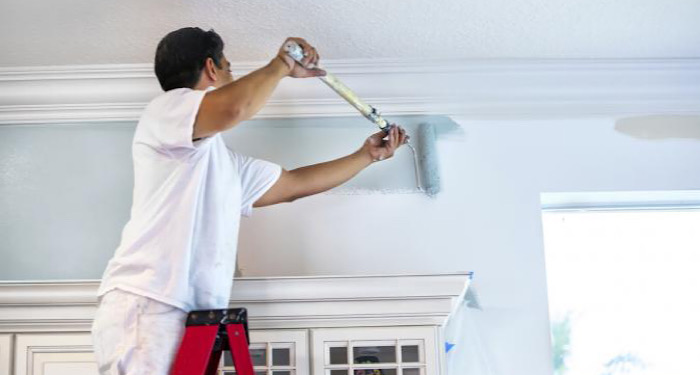
Room Type
Though it’s important to clear the room as much as possible before painting begins, some rooms will offer more ease of access than others, even at this point. For instance, a living room could be cleared to a greater extent than, say a kitchen where many appliances and fittings would remain fixed in place.
Number of Tradespeople
It may be possible to request two painters if you want to have the job done faster. On the other hand, the contractor/company you hire may decide for themselves that it is a two-person job.
Either way, this would, of course, double your labour expenses, although it should cut the timeframe of the work roughly in half. Whether this will save you money overall or not will depend on how well the painters work together.
Duration
Ease of access, the type of room, and the extent of the work will all shape how long the painting will take. This duration in turn will determine the labour cost with a single paint charging about £20 to £40 per hour.
Stripping Wallpaper and Prepping
If you choose to have old wallpaper removed, this may add about 40-45% to your final bill, depending on the extent of the work. This job will also involve the walls being prepared before the paintwork gets underway.
Wall Repairs
If you have removed old wallpaper, you may find your walls are damaged and may need new dry walling or plasterboard fitted as part of the paint preparation.
To plasterboard one room in your house, you should expect to pay around £200 to £350.
Due to the absorbency of some types of plasterboard and drywall, a tradesperson may recommend that you have the boards plastered over or just skim-plastered over to improve the overall integrity and finish.
You may therefore need to factor in an additional cost for plastering which on average is between £150 - £250 per wall.
Painting the Woodwork
Though painting a room may usually be limited to its walls and ceiling, it’s possible to have all of its woodwork painted too. This could potentially double the cost of having a room painted, but it will depend on how much woodwork there is in proportion to the walls and ceiling, and how time-consuming this element of the job will be.
For example, if you planned to have your interior doors painted as well, expect to add a cost of up to £200. If they need to be stripped first, this could cost up to £25 per door.
New Skirting Boards
Having new skirting boards installed can enhance the finished look of your room, especially if your current ones are damaged or looking a little tired.
Professional skirting board installation can cost between £300 - £500 for a standard size, basic room. However, if your room has a complicated layout, you could be looking at a cost of £800 for materials and labour.
Painting the Staircase
If you are having your woodwork painted, you may also want to give your staircase a refresh at the same time. Unsurprisingly, the bigger the staircase, the higher the cost of painting it.
The average cost to paint a staircase with minimal preparation is between £350 and £450.
How Much Does a Painter Cost?
Let’s now take a closer look at the labour costs of having a room painted. As mentioned, you’ll pay roughly £20 to £40 an hour in labour expenses + supply costs. In this section, we’ll consider how much the labour charges will be depending on where you live.
In London, a painter may charge up to £40 to £60 per hour. Much of the southeast of England is relatively pricey, although most painters outside of London do not charge as much. In Newcastle, the price may land between £15 and £20 per hour.
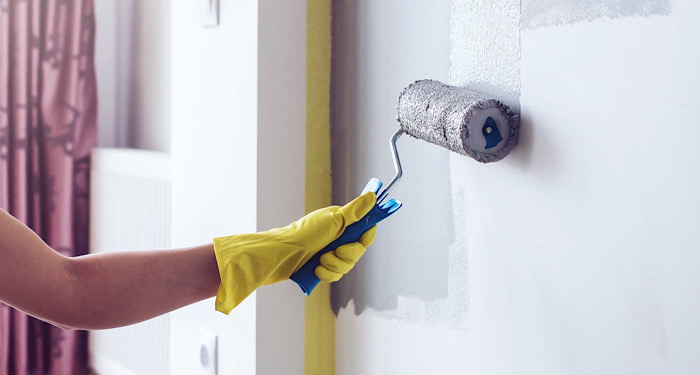
Similar prices apply throughout most of North England. Expect a charge of around £15 to £20 an hour in Glasgow. These are just a few examples. To find out specific prices for your area, try Googling ‘cost of painter near me’.
How Long Does It Take to Paint a Room?
The duration of this job will vary significantly depending on a range of different factors, but with all other things being equal, it should take one working day or less to have a 10m² wall area painted.
Painting a 15m² surface will last about one to two days. In the case of a 30m² area, expect the job to take about three days in total, and the duration would increase to about six working days if a large 60m² area needed to be painted.
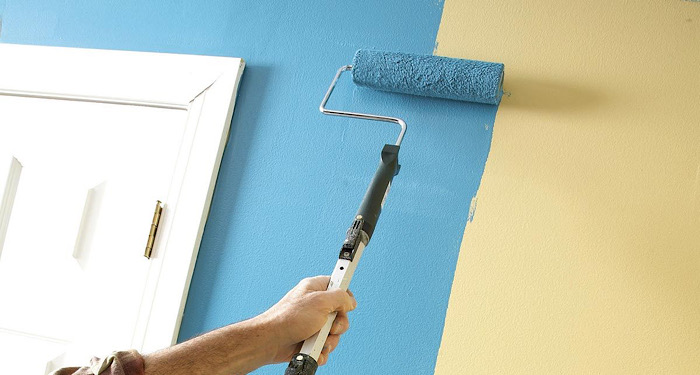
Other time-affecting factors include ease of access, whether any additional work is required, and whether the work is performed by a professional or undertaken as a DIY job. It may take an extra day or two, if you want the room’s woodwork to be painted too.
The same added timeframe applies for stripping wallpaper and prepping the walls prior to painting.
Duration of Painting a Room by Wall Surface Area
| Wall Area | Duration of Work |
|---|---|
| 10m² | 0.5 to 1 days |
| 15m² | 1-2 days |
| 30m² | 2-4 days |
| 60m² | 5-7 days |
Types of Paint
When it comes to having your walls painted, there are several different types of paint you should consider. The contractor you’ve hired may have a good idea as to what paint would be most suitable for your room, or they may have a standard paint type ready to go for most of their work.
However, if you have the option of choosing the paint they’ll use or you intend to paint the room yourself, the following subsections will prove especially helpful.
Matte Paint Cost
One of the most popular types of paint is matte. It’s often employed if a surface is uneven, although it may be used on smooth surfaces too. Matte paint provides the flattest-looking finish out of the range of paint types.
The ability of a matte-painted surface to scatter light uniformly means that there will be no reflection and the entire surface area will be evenly lit.
In essence, matte can conceal any imperfections of the wall, ceiling, or any other surfaces that you’d like to paint with this product type.
However, matte can accumulate dirt and grime relatively easily when being applied. Further, it takes plenty of work to apply matte effectively.
Rooms that are susceptible to becoming messy, such as a kitchen or bathroom, are not suitable for matte painting as it is less washable and can show marks. Matte paints are generally the cheapest and cost about £5 to £8 per litre.
Pros:
- One of the cheapest options
- Very popular
- Flattest look
- Scatters light evenly across surfaces
Cons:
- Can gather grime/dirt when applied
- Not suitable for mess-prone rooms
- Involves a lot of work
Satin Paint Cost
This popular paint finish provides a smooth, silky appearance. Notably, satin finish paint, when applied correctly, will retain its pearlesque aesthetic. In contrast to a matte finish, satin-painted surfaces can be washed if they become grimy. It’s also well-suited to high traffic areas.
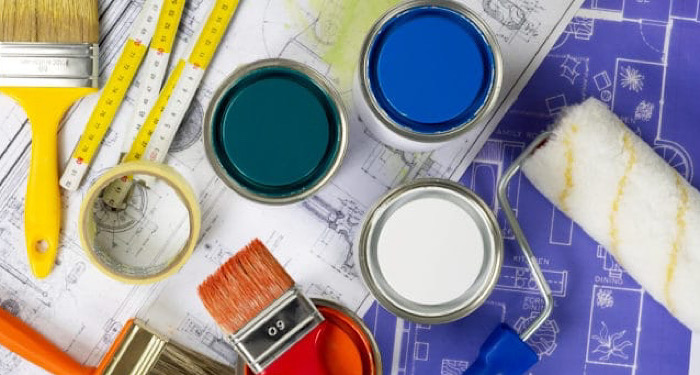
One clear disadvantage of satin is that if an area needs to be repainted, the risk is high that the contrast between new paint strokes and old ones will become evident.
Therefore, when applying satin finish paint for touch-up work or repainting, it’s vital that you take time to ensure that it matches the brush strokes of the initial paint job. On average, satin paint costs £8 to £16 per litre.
Pros:
- Smooth, silky appearance
- Pearly aesthetic
- Satin painted surfaces may be washed
- Easier to apply than matte paint
Cons:
- More expensive than matte paints
- Careful attention needed for repainting
Gloss Paint Cost
A glossy paint contrasts with matte, as it allows light to focus on specific areas of the wall, making it clear to the viewer where the light is coming from. Gloss paints high sheen comes from a smooth, high-binder paint film. Modern gloss products use acrylic/urethane (water-based) or alkyd (solvent-based) resins.
This type of paint is also more durable, designed to cope with humid rooms, can be cleaned with ease, and is well-suited to bathrooms and kitchens in particular. However, unlike matte paint, gloss will not hide the flaws of the painted surface.
A sander may be needed to smooth out the walls in order to avoid an unimpressive final look. Gloss paint generally costs about £12 to £25 per litre.
Pros:
- Can focus light if this is your preference
- Durable
- Suitable for bathrooms and kitchens
- Easy to clean
Cons:
- Does not hide surface flaws
- Sander may be required to smoothen out surface
- Can be expensive
Eggshell Paint Cost
A similar finish to satin is that of eggshell. It provides a slightly gentler sheen than a flat finish. Eggshell is seen as being one gear above a flat finish. It offers plenty of stain resistance and surfaces painted with this finish may be cleaned using a wet rag/towel.
Eggshell paint is suitable for bathrooms, kitchens, and any high-traffic areas of the home. Just ensure your paint choice is washable and moisture-resistant. Eggshell paint tends to cost between £8 and £21 per litre.
Pros:
- More decorative
- Stain-resistant
- Can be washed
Cons:
- Not easy to touch up
Semi-Gloss Paint Cost
If you’d rather something subtler than a high gloss finish, consider using a semi-gloss paint. Though it may lack some of the glamour of high gloss paint, many homeowners have turned to a semi-gloss finish so that the reflectivity and brightness of the surface is not overly-dominating.
This finish has bright and reflective properties all the same. Beyond that, semi-gloss paint is long-lasting and incredibly resistant to grime, grease, and moisture.
With that said, any imperfections or unevenness in the painted surface will remain visible after application. As with satin and eggshell paints, it is difficult and sometimes entirely unfeasible to touch up a semi-gloss painted surface. This type of wall paint costs about £9 to £18 per litre.
Pros:
- Durable
- Reflective and bright
- Not as overwhelming as a high gloss paint
- Grime, grease, and moisture-resistant
- Not too costly
Cons:
- Not easy to touch up
- Imperfections remain visible after painting
Benefits of Painting
There are a whole host of advantages to painting a room. Let’s break down some of the top examples.
Improves Appearance
The clearest benefit of having a room painted is that it will provide it with a new lease of life. On the one hand, you may want to achieve a new aesthetic for the room by removing wallpaper or having it painted with a new colour.
However, even if you are happy with the existing room colours, they may have worn down over time and discoloured, in which case, repainting the walls could revitalise the room.
Adds Home Value
Painting a room, such that it significantly enhances the aesthetic, may add a few per cent to the value of your home. However, the more subtle the changes, the less likely it is to make a meaningful difference to your home’s worth.
Durability
A high-quality paint product will be longer-lasting than a cheaper product. Further, certain paint types (i.e. gloss and semi-gloss) are more durable than others. By choosing the right type and brand of paint, you can prolong the duration before the room needs to be painted again.
Increases Resilience
With a decent paint product and the right type chosen, you could make your room’s surface more resilient. For instance, gloss and semi-gloss paints are highly resistant to moisture.
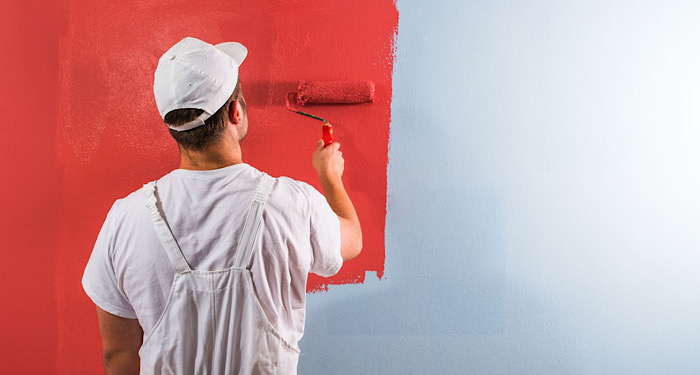
Semi-gloss is also great at preventing a buildup of grime and grease. For a good stain-resistant option, you should go with an eggshell paint.
How Much Does It Cost to Remove Paint from Walls?
You may choose to have paint removed from a room, as you’d prefer to have wallpaper fitted. Alternatively, it may need to be cleared entirely before new paint can be added, particularly if it is an entirely different colour/paint type.
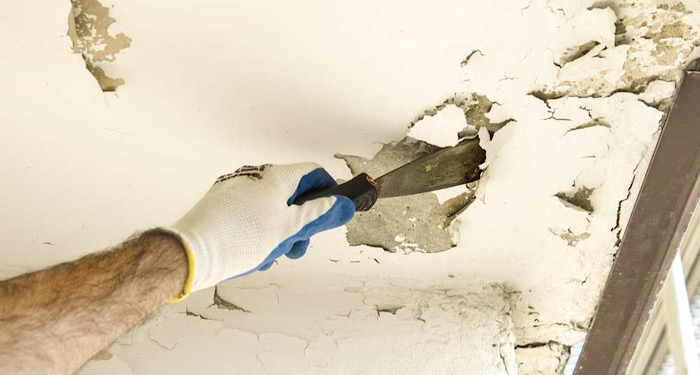
Depending on the method used, it will likely cost between £100 and £150 to have paint stripped from a wall by a professional.
The price could rise to several hundred pounds for a larger room, however. Should you choose to undertake this work DIY, expect the necessary supplies (if you do not already have them) to cost about £25 to £50.
Painting Alternatives
Painting a room is not the only way you can refresh the look of your living space. Below, we take a look at two alternative options.
Wallpapering
Opting for wallpaper over paint can be an excellent choice when you want to add texture, pattern or character to a room. Wallpaper offers a wide range of designs, from subtle textures to bold patterns, which can not be achieved with paint alone.
Wallpaper is ideal for feature walls or spaces where a distinctive look is required. Additionally, high-quality wallpaper can be more durable than paint, resisting scuffs and marks, which can be more beneficial in high-traffic areas.
The cost to wallpaper a 30m² room ranges from £500 to £600, which includes both materials and labour.
Tiling
Choosing tiling over painting is often used when homeowners are looking for a durable and premium finish. Tiles are particularly suitable in areas prone to moisture and heavy use, like bathrooms and kitchens.
The average cost of wall tiling ranges from £300 to £800, depending on the size of the area and the type of tiles chosen.
Although this is typically more expensive upfront than painting, tiles last significantly longer and are easy to wipe clean, making them a smart investment for functional areas.
FAQs
Q: How much paint do I need?
A: A 5 litre can of paint will be sufficient to paint two coats on a 30 to 35m² surface area or a 60 to 70m² area with a single coat. You’ll need to use the following equation to work out how many 5l cans of paint you’d need:
The wall surface area x 2 divided by 60 = Number of 5l paint cans required.
Here are some other options:
The wall surface area x 2 divided by 30 = Number of 2.5l paint cans required.
The wall surface area x 2 divided by 12 = Number of 1l paint cans required.
If you find that the amount of paint you expect to have is only a little more than the amount needed, you should consider buying an extra can of paint, even if a small one.
Q: What wall painting method is the best?
A: There are three main approaches to painting; brushing, spraying, and rolling. Some prefer to use paint pads, however. A roller is generally the best method for painting walls and ceilings, along with a brush for cutting in. This can vary depending on the type of surfaces you are painting.
If you intend to paint a room DIY, you should check if the manufacturer has any specific recommendations. If in doubt, consult a professional.
Q: How long before a room should be repainted?
A: On average, you should repaint a wall every 5 - 7 years in living rooms, dining rooms and adult bedrooms. These rooms tend to have moderate wear, so as long as you are using high-quality paint, it should last without needing a refresh.
Rooms that see high traffic, such as hallways and corridors, will need repainting every 2 - 4 years. These types of rooms tend to take a lot more abuse and will often have fingerprints and knocks, and scuffs that will need to be covered over.
Children's rooms follow a similar timescale due to the possibility of crayon and sticker marks, so they will need to be refreshed more often.
Lastly, bathrooms and kitchens should be repainted every 3 - 4 years. Due to the humidity and moisture found in both of these rooms, as well as grease and stains in the kitchen, these will need to be painted more regularly.
Q: What type of paint lasts the longest?
A: The most durable paint finishes are gloss and semi-gloss. These are also the easiest to clean, which is why they are often used in kitchens, bathrooms and skirting boards.
Specific paint types also offer durability depending on where they are applied. Here are some further examples of paints that last long:
- 100% Acrylic Latex Paint (Water-Based) - Resistant to fading, cracking, and blistering
- Oil-Based (Alkyd) Paint - Extremely hard finish, resists heavy wear
- Epoxy Paint - Very durable and chemical-resistant
All of these paint types can last over 7 years when surfaces are prepared correctly.
Q: How long does it take to paint an average room?
A: The time required to paint an average room in the UK varies based on several factors, including room size, preparation work, and the number of coats needed.
A 15m² room typically takes 1 to 2 days to paint, while a 30m² area may require 2 to 3 days .

